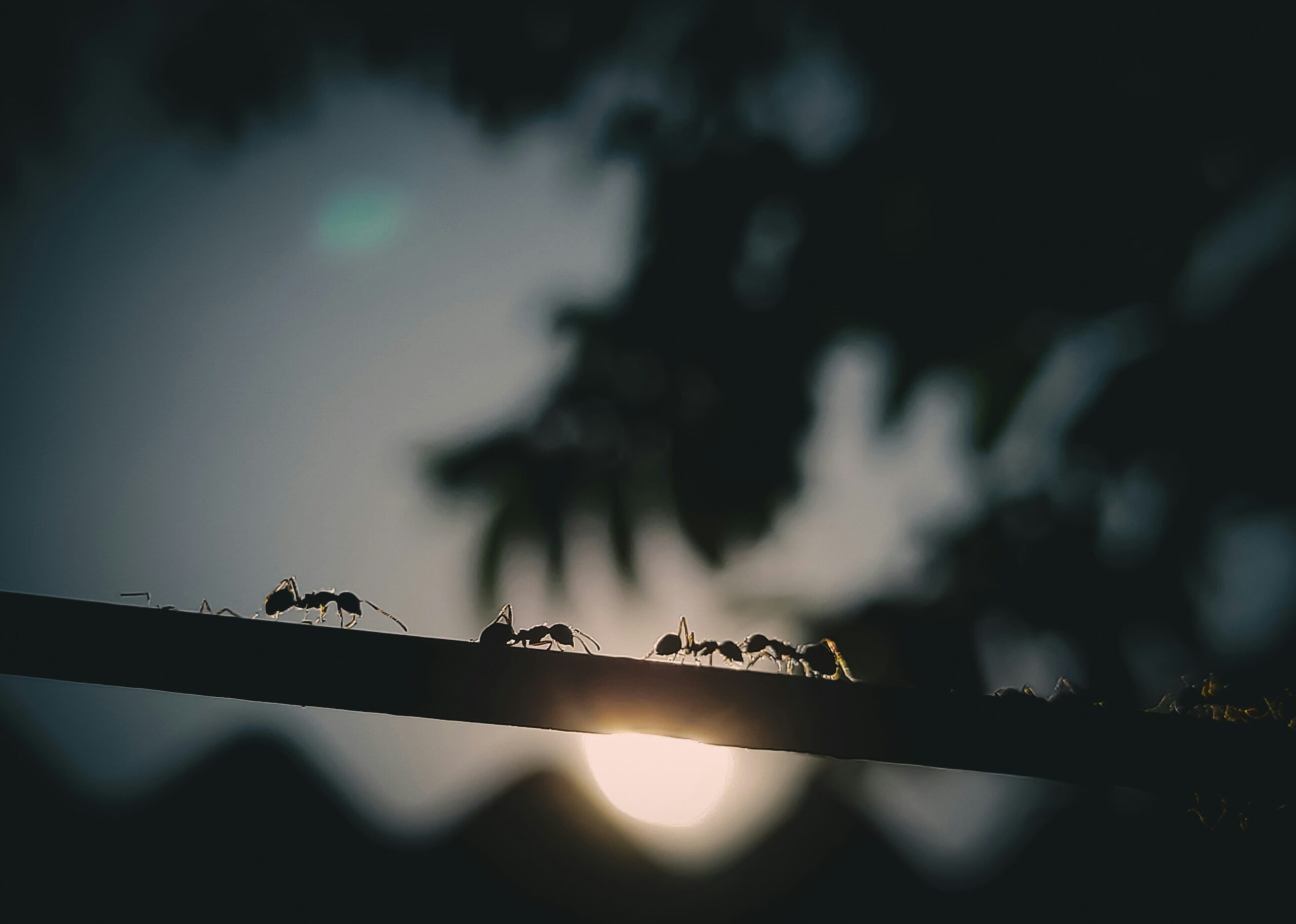
How Our Ant Control & Treatment Works
Our procedure starts with a comprehensive property inspection, leveraging this data to pinpoint the specific ant species present.
By identifying entry points and attractants, we uncover potential causes of the issue. Furthermore, we pinpoint treatment areas, administering precise solutions to eradicate current infestations and mitigate future occurrences.
Offering both one-time and ongoing services for ant control and prevention, our seasoned technicians are equipped with state-of-the-art tools and techniques to ensure safe and effective management of ant problems.
What Types of Ants Do We Treat?
It is important to have professional technicians properly identify the ant problem before starting treatment. This is because each ant problem requires a different approach.
Carpenter Ants
- They inhabit logs, stumps, and hollow trees.
- During warm spring and early summer days, winged carpenter ants emerge from well-established colonies.
- These insects scatter excavated wood particles across your property.
Homeowners should remain vigilant for indoor foraging ants and seek out their nesting sites. Look for wood debris in siding cracks, behind moldings, within basements and attics, and beneath porches.
Odorous House Ants
- Following heavy rainfall, they tend to infiltrate residences and commercial premises via vents, window sills, and doors.
- Frequently confused with Carpenter Ants.
- Commonly encountered in kitchens, they are small (1/8 inch long) and swift.
For effective odorous house ant eradication, bait usage is recommended. Employ bait stations specially crafted for this purpose, minimizing disturbance from pets or children while ensuring unfettered access to the bait material for the ants. Strategically position bait stations in areas where these ants have been observed.
Pavement Ants
- The pavement ant, a non-native species, nests in the soil.
- Worker ants display varying sizes (2.5–4 mm long) and colors (ranging from dark brown to black).
- Reproductive ants or swarmers possess wings and are approximately twice the size of the workers.
Managing foraging pavement ant workers can be achieved by utilizing ant bait. Workers transport the baited substance to the nest, effectively eliminating the colony. Ant bait should be positioned in locations of observed activity, ensuring they are out of reach of children and pets.
Pharoah Ants
- These ants are usually light yellow or red.
- They tend to inhabit moisture-rich zones such as bathrooms and kitchens.
- Despite their diminutive size (approximately 1/10 inch long), their presence can lead to significant issues upon infiltrating homes and structures.
Pharaoh ants favor sweets over proteins, underscoring the importance of selective baiting to ensure the appropriate bait is employed throughout the ant control procedure.
Ant Infestation Prevention Tips
Ants are social insects that live in organized colonies and are known for their ability to invade homes in search of food and shelter. They can be highly industrious, forming complex networks of trails to find and transport food back to their nests. Their nesting sites can be varied, including soil, wood, and even inside wall voids. Ants are attracted to food sources and can enter homes through even the smallest cracks and gaps.
To prevent ants, it’s essential to focus on cleanliness and maintenance. Keep your kitchen and dining areas clean by promptly addressing crumbs and spills, and store food in airtight containers to remove potential food sources. Regularly empty and clean trash bins, ensuring they have tight-fitting lids. Since ants are also attracted to moisture, addressing any leaks, and reducing humidity can make your home less inviting to them. Sealing cracks and gaps around doors, windows, and foundations can help keep ants from entering.
Enjoy an Interruption-Free Life from Ants
Universal Home & Pest Solutions provides thorough ant control solutions aimed at eradicating current infestations and preventing future occurrences. Reach out to us to schedule your service and discover how we can assist you in resolving your ant issue. We eagerly await your contact!
